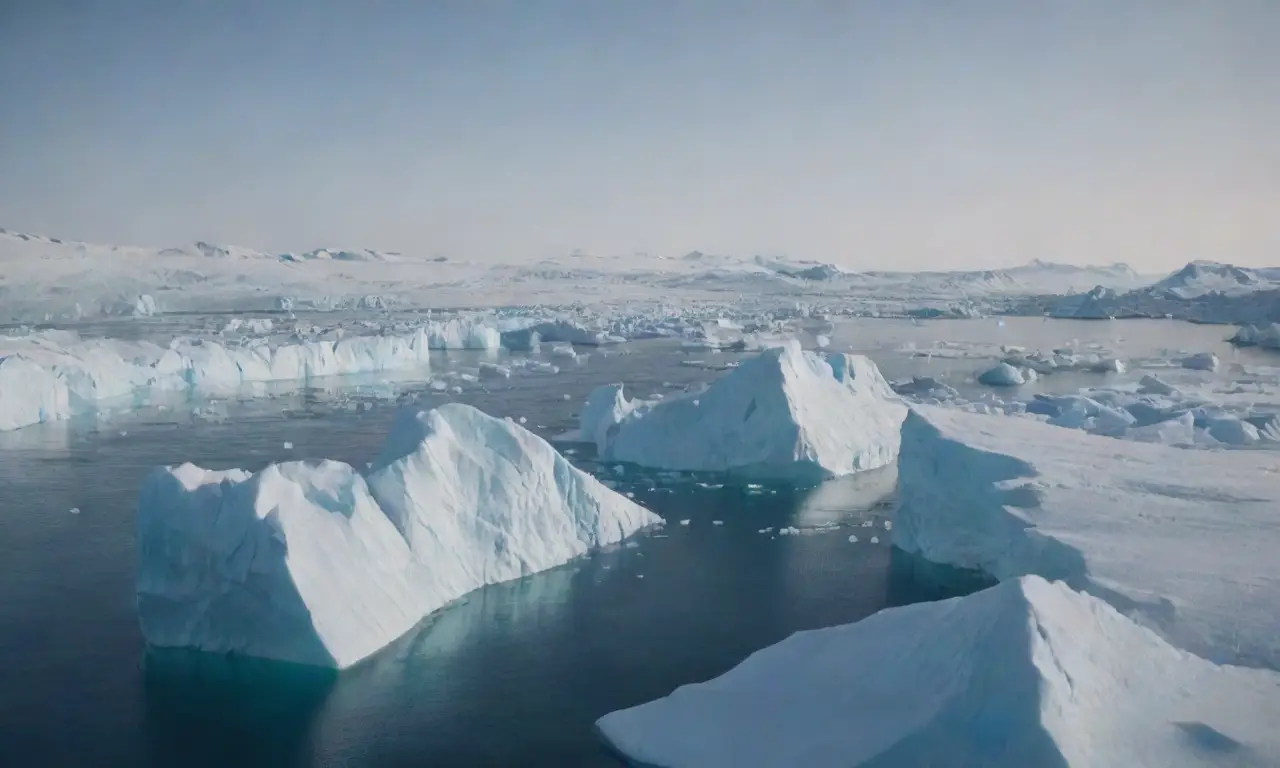
Machine Learning Approaches for Glacial Melt and Sea-Level Rise

Introduction
The impact of climate change on our planet is both profound and far-reaching, with one of the most critical consequences being the accelerated melting of glaciers and subsequent rise in sea levels. Glacial melt contributes significantly to the overall rise in sea levels, which poses a serious threat to coastal communities, ecosystems, and global weather patterns. As we explore the complexities of these environmental issues, the role of machine learning becomes pivotal in analyzing and predicting future scenarios. Machine learning offers robust methodologies to interpret vast datasets that traditional models often struggle to analyze effectively.
This article seeks to delve into the various machine learning approaches utilized to study glacial melt and its implications for sea-level rise. We will explore different techniques, models, and case studies where machine learning has been leveraged to enhance our understanding of this pressing problem. By the end of this exploration, readers will grasp how innovative computational techniques can provide insights into one of the most critical challenges of our time.
Understanding Glacial Melt and Its Precursors
The thawing of glaciers has been significantly exacerbated due to rising global temperatures driven by increased greenhouse gas emissions. A vital factor in the monitoring of glacial melt includes understanding the precursors that lead to this phenomenon. Key drivers of glacial melt include atmospheric warming, the increasing frequency of rainfall, changes in wind patterns, and surface characteristics of the glaciers themselves.
Machine learning models can utilize large datasets composed of meteorological and satellite data to predict glacial melt rates. For example, by employing supervised learning techniques, researchers can feed historical data on temperature, precipitation, and glacial extent into algorithms which then learn to identify patterns. Once trained, these models become adept at making predictions about future melt scenarios under various climate change projections. This predictive capability is critical, as it aids scientists in identifying glaciers at risk and planning better adaptive strategies for affected regions.
Climate Model Uncertainty: Tackling Challenges with ML ApproachesMoreover, the integration of remote sensing data collected from satellites offers an efficient way to continuously monitor glacial ice. Machine learning techniques, particularly those in computer vision, can analyze satellite imagery to detect changes in glacier volume and surface rifts or crevasses, which often precede significant melt events. By automating this process, machine learning can greatly expedite the identification of areas for further study and urgent action.
The Role of Machine Learning in Modeling Glacial Dynamics
A critical aspect of understanding glacial melt involves modeling glacial dynamics to predict future melt rates effectively. Machine learning algorithms can establish more adaptable models when traditional physical models may fail to capture the complexities involved. Deep learning, particularly neural networks, has been notably effective in approximating functions and capturing nonlinear relationships.
For instance, researchers have developed convolutional neural networks (CNNs) that process spatial data captured from satellite images to predict changes in glacier mass balance. By training these networks on historical data, they become capable of recognizing features representative of various climatic conditions that influence melting. Feature extraction becomes crucial here, as the model learns to discern which parts of the image relate to different environmental variables affecting glacier dynamics.
In addition to CNNs, other machine learning approaches such as Random Forests and Support Vector Machines can handle structured data effectively. By analyzing variables like temperature, rainfall, and glacier area over time, these models can predict future changes to glacial extents. Unlike traditional statistical methods that often rely on linear relationships, machine learning techniques can explore and map complex interactions in the data, leading to more robust conclusions regarding glacial behavior.
Case Studies of Machine Learning Applications
Several pioneering studies have successfully integrated machine learning methodologies into glacial research. For example, a notable investigation conducted in Greenland involved the use of machine learning techniques to assess glacier melt rates and their contributions to sea-level rise. The researchers utilized various sources of data, including airborne radar and satellite imagery, to train their models effectively.
The study employed machine learning classifiers to assess the influence of environmental variables on glacial retreat. By analyzing patterns in melting and correlating them with climatic trends, the researchers were able to forecast future melt rates with improved accuracy. Their predictive modeling indicated that significant portions of Greenland’s ice sheet could experience enhanced melting under anticipated climate scenarios, potentially contributing to millions of people being displaced due to rising sea levels.
Further research conducted on the Antarctic Ice Sheet also showcased machine learning's capabilities in predicting mass loss. Through the application of ensemble machine learning techniques, scientists managed to analyze diverse datasets for model training. Their findings predicted an alarming increase in melting rates attributable to rising ocean temperatures interacting with ice shelves—a critical aspect that could yield even greater contributions to overall sea-level rise.
Challenges and Limitations of Machine Learning in Glacial Studies
While the integration of machine learning into the study of glaciers and sea-level rise presents numerous advantages, several challenges and limitations persist. One of the significant hurdles is the availability and quality of data. Machine learning models are heavily reliant on the volume of high-quality, labeled datasets. However, regions with inadequate historical records or the presence of systematic errors can lead to skewed model predictions, particularly if the algorithms are trained on non-representative samples.
Overfitting poses another challenge within the realm of machine learning. This issue arises when models become excessively complex and start to capture noise in the data rather than the underlying patterns. As a result, the model performs well on training data but poorly on unseen data. To address overfitting, practitioners often employ techniques such as cross-validation and regularization, but these methods require careful tuning and expertise.
Additionally, there may be inherent uncertainties when translating computational predictions into actionable policies. Policymakers require clear and more supported scientific conclusions to make informed decisions. Thus, it becomes crucial that researchers communicate findings from machine learning studies clearly, ensuring that interpretations do not lead to misunderstanding regarding the implications for sea-level rise or environmental management strategies.
The Future of Machine Learning in Climate Research
The potential of machine learning in addressing the challenges posed by glacial melt and sea-level rise is undeniably promising. As technology progresses, we can expect advancements in data collection methods, including the increasing use of drones and enhanced satellite missions, leading to more refined datasets for analysis. The advent of big data technologies also opens doors for utilizing real-time data streams, further improving the precision of model predictions.
The increased collaboration among disciplines—such as climate science, geophysics, and artificial intelligence—will undoubtedly enhance the robustness of machine learning applications. As climate models grow more complex and encompassing, integrating various datasets will foster a comprehensive understanding of factors influencing glacial dynamics. Coupled with citizen science initiatives, we can expect the expansion of datasets significantly related to glaciers and their behaviors.
Moreover, as computational power continues to grow, the complexity of models can advance significantly. The development of explainable AI within machine learning can help elucidate how models reach certain conclusions about glacial melt, ensuring that stakeholders understand the derived insights. Ultimately, as our capabilities to analyze and forecast glacial melt improve, we enhance our ability to respond effectively to impending impacts from sea-level rise.
Conclusion

The intersection of machine learning, glacial melt, and sea-level rise constitutes a crucial area of research with the potential to reshape our understanding of climate dynamics. Through nuanced predictive models and better monitoring methods, we can glean vital insights into the ongoing transformations that glaciers are undergoing. This understanding offers not just scientific knowledge but also significant implications for policymakers, environmentalists, and coastal communities already facing challenges associated with rising sea levels.
While the promise of machine learning is vast, it is essential to acknowledge the challenges and limitations we face in this realm. Continual efforts must focus on improving data quality, refining models, and ensuring effective communication of scientific findings. As collaboration among scientists, policymakers, and technology experts intensifies, we can harness the full potential of machine learning to not only predict outcomes but also formulate effective strategies for adaptation and mitigation.
In conclusion, the ongoing research in machine learning approaches to glacial melt and related sea-level rise highlights the urgent necessity to confront the climate crisis with innovative solutions. By leveraging technology and expertise, we can develop a deeper understanding of these environmental shifts, thereby contributing towards a sustainable and resilient future for our planet and its inhabitants.
If you want to read more articles similar to Machine Learning Approaches for Glacial Melt and Sea-Level Rise, you can visit the Climate Modeling category.



You Must Read